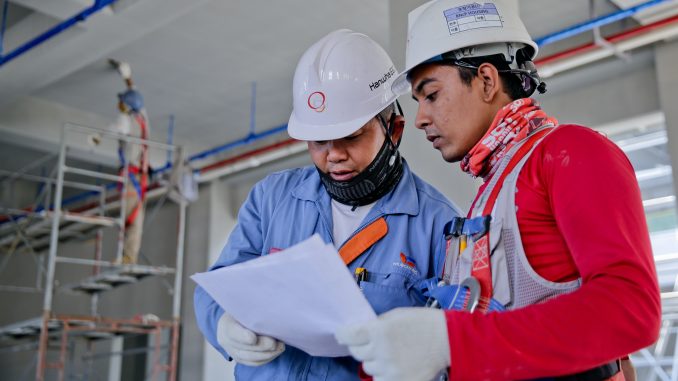

For many, a career in construction has its fair share of perks. You can create new structures with your bare hands, work outside, and earn some decent money while you’re at it. However, as with any job, there are safety risks, and it is imperative that you are cognizant of your work area so you aren’t surprised by a sudden danger.
When starting a new construction project, it can be easy to get sucked into the thrill of design and forget everything else, but employee health is the number one priority. Let’s look at the most common health concerns and how you can be smart about safety.
Keep a Clean Site
The first step to a safe project site is to be proactive about the space and make sure that every tool has its place, and each protocol is in effect. Currently, slips, trips, and falls are still some of the most common forms of workplace accidents, so don’t leave any scaffolding, stray tools, or open chemicals lying around. Also, during and after the project, wipe down hard surfaces and sweep floors just in case there are loose nails or screws that can be easy to miss with the naked eye. This is a smart idea for the workers and any clients who may come to review your work.
Another common danger is the risk of injury due to moving objects, which could include anything from a person carrying a ladder to supply vehicles and cranes. Ensure there is a clear path that these vehicles should follow, and signage should be posted to inform workers to stay out of that particular area. As an extra precaution, employees who must work near moving vehicles should wear brightly colored clothing or vests that will make them easily recognizable.
If your project requires working from heights, then extra precautions must be made to mitigate the chance of injury. Ladders must be used with caution by enforcing workers to have three points of contact at all times (two legs, one arm, or two arms, one leg). Before going up, your project manager needs to ensure that the proper harnesses and safety lanyards are available and that they are inspected daily.
Smart Tool Use
As the world has evolved, so have our tools, but even if they are advanced, they can still cause you harm, especially if they are used repeatedly without a break. One of the more common construction dangers is hand-arm vibration syndrome, which is damage to your nerves and joints that occurs when using ground working equipment or standard tools like power drills for too long. As a project manager, look for low vibration options and ensure that the operator always wears gloves.
We don’t always realize it, but a common threat associated with using power tools is the loud noise that they produce, which can cause long-term hearing damage. To reduce the risk, it is recommended that all operators wear both earplugs and earmuffs to adequately mute the harmful noise. If workers use these tools every day, they should also go to their health provider for regular hearing checks so issues can be caught before it is too late.
As a construction professional, it is necessary to know the important details of the tools you use and their limitations. For instance, many shock-resistant tools that create a lot of friction when used, such as saw blades, are made from tungsten steel. This is good for its purpose, but that friction can cause the tool to run hot, so always wear gloves when at work. No matter what you are using, always remember to properly maintain your tools, follow the instructions in the user’s manual, and unplug them when not in use.
Dangerous Chemicals
When it comes to construction site dangers, it is not only the tools you use that can cause harm but also the invisible chemicals, molds, and allergens in the air that can cause serious sickness and even result in death. One of the most dangerous substances found in many homes and structures is asbestos, which is a combination of fibrous minerals found in many older building materials, including floor tiles, roof shingles, and more. Asbestos is so dangerous because after you unknowingly breathe it in, it attaches to your lungs and could result in mesothelioma or other forms of cancer.
Project managers should proactively test for asbestos before the project so proper protections can be made if it is found. Doing so is as easy as taking a sample of the suspicious material to the lab and using a microscope to detect the chemicals. It is a simple process, but it must not be forgotten, or your construction company could face unneeded lawsuits. If asbestos is detected, certified professionals should be called to remove the materials in question. Do not have your workers remove it, or exposure to the harmful fibers is likely.
Another dangerous substance is respirable crystalline silica (RCS), which is often formed when bricks and concrete are crushed or drilled. Again, these small fragments can easily be inhaled, attach to the respiratory system, and result in lung cancer. Take the time to train your workers about the dangers of silica, always clean dust and debris from work areas, and use an alternative product if possible.
As a construction worker, there is nothing quite like building an impressive structure from the ground up, but caution is required. Work safe and smart and enjoy your work without the harmful side effects.




